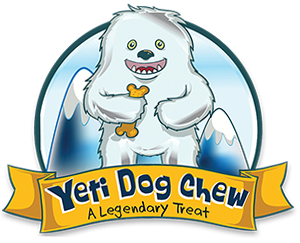Your life may revolve around your dog. You may have a pretty good understanding about his wagging tail, every bark or whine. Yet, there may be some facts about dogs that you may not be aware, as each dog has his own unique set of characteristic and personality.
-
The heartbeat of a dog depends on its size. In a resting dog, normally the heartbeat ranges from 60 to 140 beats per minute, in small dogs between 100 to 140 beats per minute and between 60 to 100 beats per minute in large ones.
-
Dogs have normally warmer body temperature than humans do. At a temperature, around 101-degree Fahrenheit, humans are considered to have a fever. But, in a dog’s case 101 - 102.5-degree Fahrenheit is considered as a normal body temperature.
-
Dogs do sweat, but differently than humans. They only sweat through areas that are not covered with furs, such as paw pads and nose.
-
A dog’s nose is wet because they secrete a mucus that helps them to absorb scent and they lick their nose a lot to lick off the scent of chemicals. Also, moist noses help dogs to regulate their body temperature and cool down.
-
A part of dog’s brain is devoted to analyzing smells. So, their sense of smell is 10,000 to 1,00,000 times acute than humans.
-
When dogs sleep, they curl up into a ball to conserve body heat and protect their vital organs from predators, which is an evolutionary adaptation.
-
Dogs see only black and white - is a myth. They can see colors, but fewer than normal humans do such as blue, green-yellow and various shades of grey.
-
A dog’s sense of hearing can reach four times farther than humans. Their hearing frequency ranges from around 40 Hz to 60 kHz, depending on their age and breed.
-
Dogs mark their territory with urine, they lift up the leg while doing their business. Instead of putting a name on stuff like we do, they use their scent glands on their paws to leave their mark on the ground.
-
Dogs too have two sets of teeth in their lives. Puppies have around 28 teeth, while adult dogs have around 42 teeth. The puppy teeth begin to shed and be replaced by adult teeth at about 4 months of age.
-
A dog’s nose print can be used to prove identity just like fingerprints. Their nose print is unique and can be used to identify a dog if found without a collar or tags.
-
The world’s oldest dog breed is Saluki originated in Egypt around 329 B.C. They are the royal dog of Egypt used to help them in hunting.
-
Dogs can donate blood to fellow pooches. Even though, dogs do not share the same blood group. In their life, dogs can receive 1 transfusion, even if it is not from same blood group.
-
Dogs drink with the back of their tongue. The backward curl of their tongue allows them to drink more liquid per lap than they would be able to swallow with straight tongue.
-
When a dog’s paw is twitching when it is asleep, they are dreaming! Dogs have similar stages of sleep as human and they dream during REM (Rapid Eye Movement) stage.
-
An average dog can comprehend about 250 different words and count up to 5. They have similar brain aptitude level as a two-year-old child.
-
Smiling at a dog may not be a wise idea. Dogs see your smile not as friendly body language, but consider this as "bearing teeth" an act of aggression.
-
Dogs often chase their tails. It can be due to both positive and negative reasons such as anxiety, curiosity or lack of exercise. However, if they exhibit this behavior for a great deal of time, you should check up with the vet.
-
Yawning is contagious not just to humans. If a dog in a pack yawns, it is likely the other will follow.
-
A dog’s posture can indicate fear if their ears are back and the tail is held below.
-
Petting your dog and gazing into their eyes releases relaxation hormone oxytocin for both people and dog. It can lower your blood pressure and cut down some level of stress hormones.
-
Dogs have three eyelids. The third eyelid is called nictitating membrane or haw. It helps to keep their eyes lubricated and protected in the face of wind, sand or dirt without them having to blink.
-
Dogs shoulder blades are unaligned with rest of their skeleton. It allows them with greater flexibility while running.
-
The shape of a dog’s face suggests how long it will live. Dogs with sharp, pointed faces that look more like wolves typically live longer. Dogs with very flat faces, such as bulldogs, often have shorter lives.
-
Apple and pear seeds should be kept away from dogs. Their composition includes arsenic, which could kill a dog.

